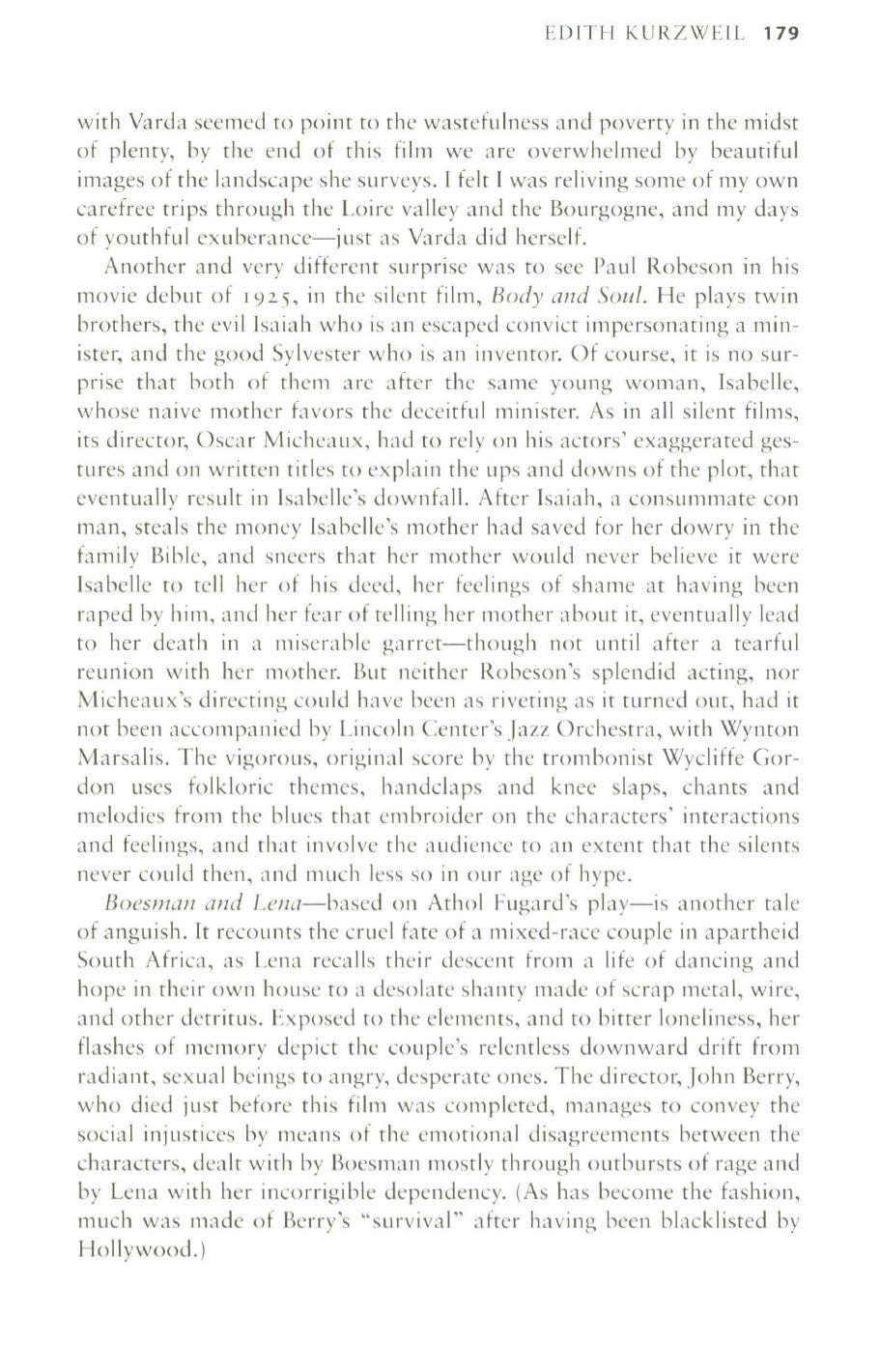
EDITH KURZWE IL
179
with Varda seemed
to
point
to
the wastefulness and poverty in the midst
of plenty, by the end of this film we are overwhelmed by beautiful
images of the landscape she surveys. I felt I was reliving some of my own
carefree trips through the Loire valley and the Bourgogne, and my days
of youthful exuberance-just as Varda did herself.
Another and very different surprise was to see Paul Robeson in his
movie debut of
1925,
in the silent film,
Body and Soul.
He plays twin
brothers, the evil Isaiah who is an escaped convict impersonating a min–
ister, and the good Sylvester who is an inventor. Of course, it is no sur–
prise that both of them are after the same young woman, Isabelle,
whose naive mother favors the deceitful minister. As in all silent films,
its director, Oscar Micheaux, had to rely on his actors' exaggerated ges–
tures and on written titles
to
explain the ups and downs of the plot, that
eventually result in Isabelle's downfall. After Isaiah, a consummate con
man, steals the money Isabelle's mother had saved for her dowry in the
family Bible, and sneers that her mother would never believe it were
Isabelle
to
tell her of his deed, her feelings of shame at having been
raped by him, and her fear of telling her mother about it, eventually lead
to her death in a miserable garret-though not until after a tearful
reunion with her mother. But neither Robeson's splendid acting, nor
Micheaux's directing could have been as riveting as it turned out, had it
not been accompanied by Lincoln Center's Jazz Orchestra, with Wyntan
Marsalis. The vigorous, original score by the trombonist Wycliffe Gor–
don uses folkloric themes, handclaps and knee slaps, chants and
melodies from the blues that embroider on the characters' interactions
and feelings, and that involve the audience
to
an extent that the silents
never could then, and much less so in our age of hype.
Boesnwn and
LeI/a-based on Athol fugard's play-is another tale
of anguish.
It
recounts the cruel fate of a mixed-race couple in apartheid
South Africa, as Lena recalls their descent from a life of dancing and
hope in their own house to a desolate shanty made of scrap metal, wire,
and other detritus. Exposed to the elements, and
to
bitter loneliness, her
flashes of memory depict the couple's relentless downward drift from
radiant, sexual beings
to
angry, desperate ones. The director, John Berry,
who died just before this film was completed, manages to convey the
social injustices by means of the emotional disagreements between the
characters, dealt with by Boesman mostly through outbursts of rage and
by Lena with her incorrigible dependency. (As has become the fashion,
much was made of Berry's "survival" after having been blacklisted by
Hollywood.)


